EM Quick Hits 60 Post-Tonsillectomy Hemorrhage, Post-CABG Infections, Bougie Tips, Pelvic Fracture Bleeds, Debriefing: Why, When & How
Update: 2024-10-22 1
1
Description
Topics in this EM Quick Hits podcast
Kevin Wasko on post-tonsillectomy hemorrhage management (1:06 )
Brit Long on assessment and management of post-CABG surgical incision infections (15:40 )
Anand Swaminathan on evidence, pitfalls and tips on using Bougies (23:07 )
Leah Flannigan on when to suspect vascular injury in patients with low energy mechanism pelvic fractures (31:05 )
Andrew Petrosoniak on debriefing after cases: why, when and how (38:35 )
Podcast production, editing and sound design by Anton Helman
Podcast content, written summary & blog post by Anton Helman, October, 2024
Cite this podcast as: Helman, A. Wasko, K. Long, B. Swaminathan, A. Flannigan, L. Petrosoniak, A. EM Quick Hits 60 - Post-Tonsillectomy Hemorrhage, Post-CABG Infections, Bougie Tips, Pelvic Fracture Bleeds, Debriefing: Why, When & How. Emergency Medicine Cases. October, 2024. https://emergencymedicinecases.com/em-quick-hits-october-2024/. Accessed October 28, 2025.
Post-Tonsillectomy Hemorrhage Management
Best of University of Toronto EM
* Primary vs. Secondary post-tonsillectomy hemorrhage:
* Primary post-tonsillectomy hemorrhages occur within the first 24 hours post-op, usually related to intraoperative factors like surgical technique or undiagnosed coagulopathies (e.g., von Willebrand disease). These bleeds are more likely in the immediate post-op period.
* Secondary post-tonsillectomy hemorrhages occur after 24 hours, typically around post-op days 5 to 7, but can occur up to 14 days. They are caused by the sloughing off of the fibrin clot, exposing underlying tissue, which can lead to ongoing oozing or trickling bleeding. These are more insidious and can escalate quickly into life-threatening hemorrhages.
* Key point:
* Even if the bleeding is minor, like a small trickle, it should be considered a potential herald bleed—a precursor to a larger, more dangerous bleed. In these cases, early ENT consultation is crucial as definitive source control is needed, especially if bleeding persists for several hours.
* Management approach (3-pronged):
* Resuscitation:
* Ensure the patient is sitting upright in a comfortable position to prevent aspiration and make visualization easier.
* Establish IV access and consider starting IV TXA 1-2g in adults, 15mg/kg in children if appropriate.
* Get help early:
* Contact ENT early, especially if you’re in a rural or resource-limited setting where transfer may be delayed.
* Arrange for transport to a tertiary care center if no ENT is available locally.
* Temporizing measures (until definitive management in the operating room):
* Direct pressure with gauze and topical medications: Use lidocaine spray for local analgesia, and gauze soaked in epinephrine and/or TXA
* Tranexamic Acid (TXA) options:
* Nebulized TXA: Consider while other preparations are made. It’s a low-risk, easy intervention.
* Topical TXA: Soak gauze in TXA and apply it directly to the bleeding site.
* IV TXA: 15 mg/kg in children or 1-2 grams in adults over 10 minutes.
* While evidence is limited, it is a reasonable adjunct in these cases, given the low risk of harm.
* Airway Management in the post-tonsillectomy bleed
* If the patient starts to aspirate blood, or if bleeding becomes severe enough to cause respirato...
Kevin Wasko on post-tonsillectomy hemorrhage management (1:06 )
Brit Long on assessment and management of post-CABG surgical incision infections (15:40 )
Anand Swaminathan on evidence, pitfalls and tips on using Bougies (23:07 )
Leah Flannigan on when to suspect vascular injury in patients with low energy mechanism pelvic fractures (31:05 )
Andrew Petrosoniak on debriefing after cases: why, when and how (38:35 )
Podcast production, editing and sound design by Anton Helman
Podcast content, written summary & blog post by Anton Helman, October, 2024
Cite this podcast as: Helman, A. Wasko, K. Long, B. Swaminathan, A. Flannigan, L. Petrosoniak, A. EM Quick Hits 60 - Post-Tonsillectomy Hemorrhage, Post-CABG Infections, Bougie Tips, Pelvic Fracture Bleeds, Debriefing: Why, When & How. Emergency Medicine Cases. October, 2024. https://emergencymedicinecases.com/em-quick-hits-october-2024/. Accessed October 28, 2025.
Post-Tonsillectomy Hemorrhage Management
Best of University of Toronto EM
* Primary vs. Secondary post-tonsillectomy hemorrhage:
* Primary post-tonsillectomy hemorrhages occur within the first 24 hours post-op, usually related to intraoperative factors like surgical technique or undiagnosed coagulopathies (e.g., von Willebrand disease). These bleeds are more likely in the immediate post-op period.
* Secondary post-tonsillectomy hemorrhages occur after 24 hours, typically around post-op days 5 to 7, but can occur up to 14 days. They are caused by the sloughing off of the fibrin clot, exposing underlying tissue, which can lead to ongoing oozing or trickling bleeding. These are more insidious and can escalate quickly into life-threatening hemorrhages.
* Key point:
* Even if the bleeding is minor, like a small trickle, it should be considered a potential herald bleed—a precursor to a larger, more dangerous bleed. In these cases, early ENT consultation is crucial as definitive source control is needed, especially if bleeding persists for several hours.
* Management approach (3-pronged):
* Resuscitation:
* Ensure the patient is sitting upright in a comfortable position to prevent aspiration and make visualization easier.
* Establish IV access and consider starting IV TXA 1-2g in adults, 15mg/kg in children if appropriate.
* Get help early:
* Contact ENT early, especially if you’re in a rural or resource-limited setting where transfer may be delayed.
* Arrange for transport to a tertiary care center if no ENT is available locally.
* Temporizing measures (until definitive management in the operating room):
* Direct pressure with gauze and topical medications: Use lidocaine spray for local analgesia, and gauze soaked in epinephrine and/or TXA
* Tranexamic Acid (TXA) options:
* Nebulized TXA: Consider while other preparations are made. It’s a low-risk, easy intervention.
* Topical TXA: Soak gauze in TXA and apply it directly to the bleeding site.
* IV TXA: 15 mg/kg in children or 1-2 grams in adults over 10 minutes.
* While evidence is limited, it is a reasonable adjunct in these cases, given the low risk of harm.
* Airway Management in the post-tonsillectomy bleed
* If the patient starts to aspirate blood, or if bleeding becomes severe enough to cause respirato...
In Channel



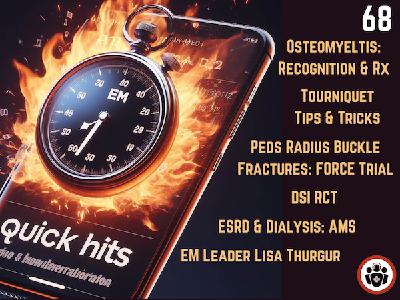

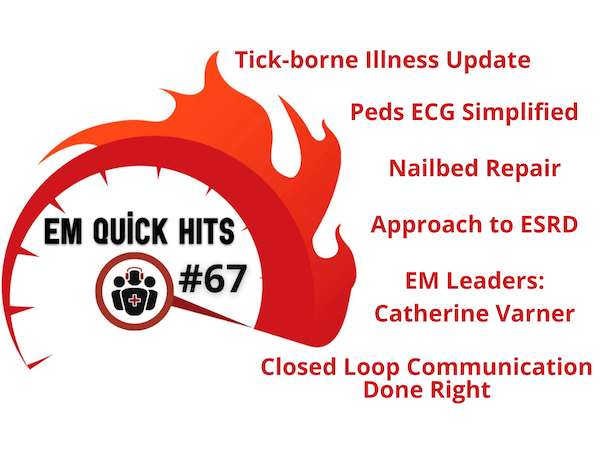
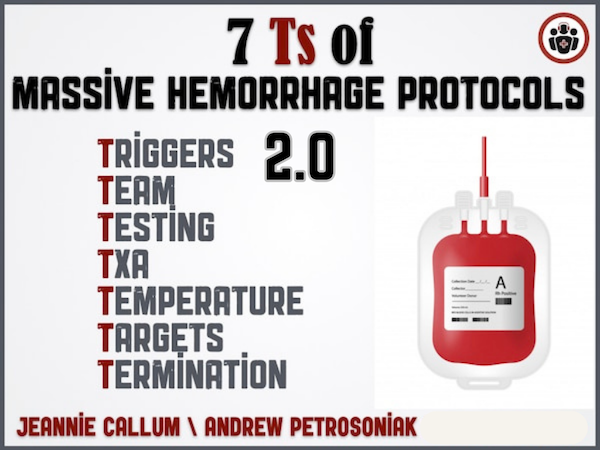
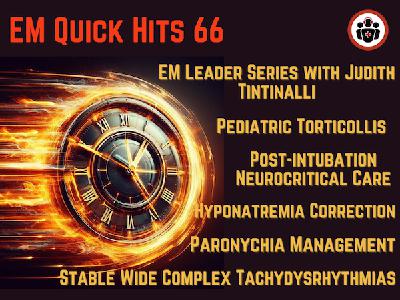

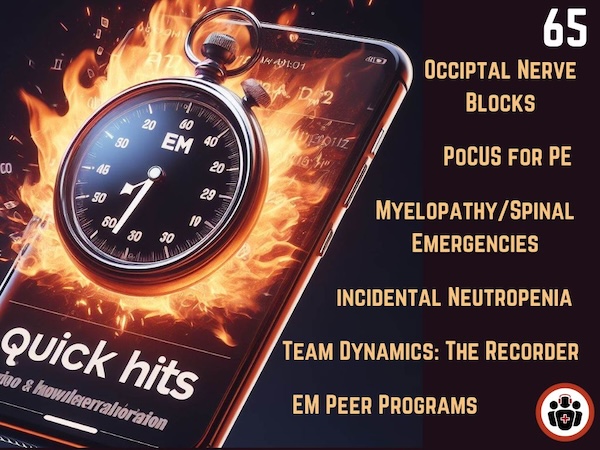
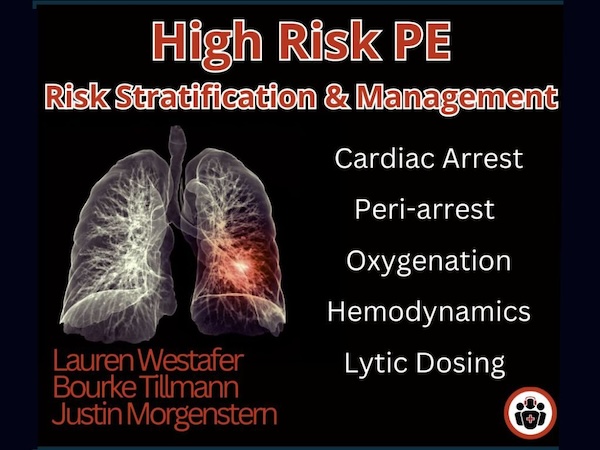












scribe